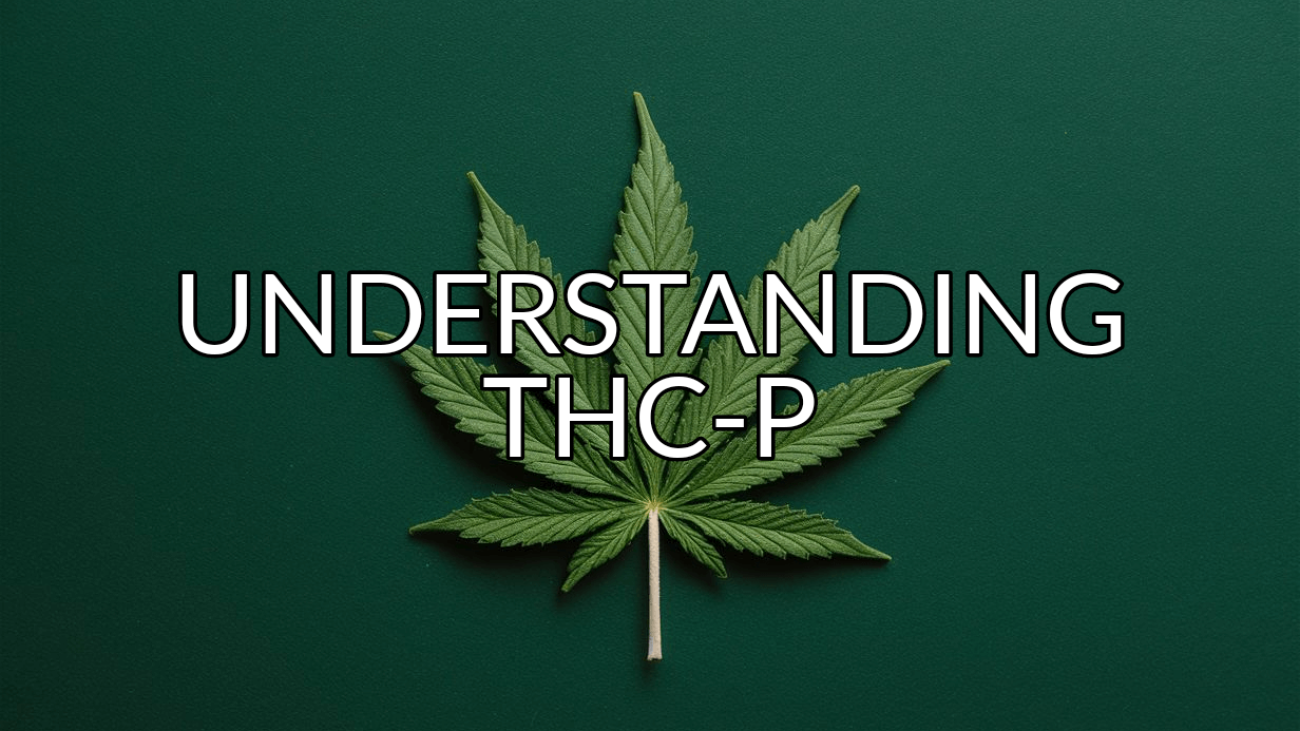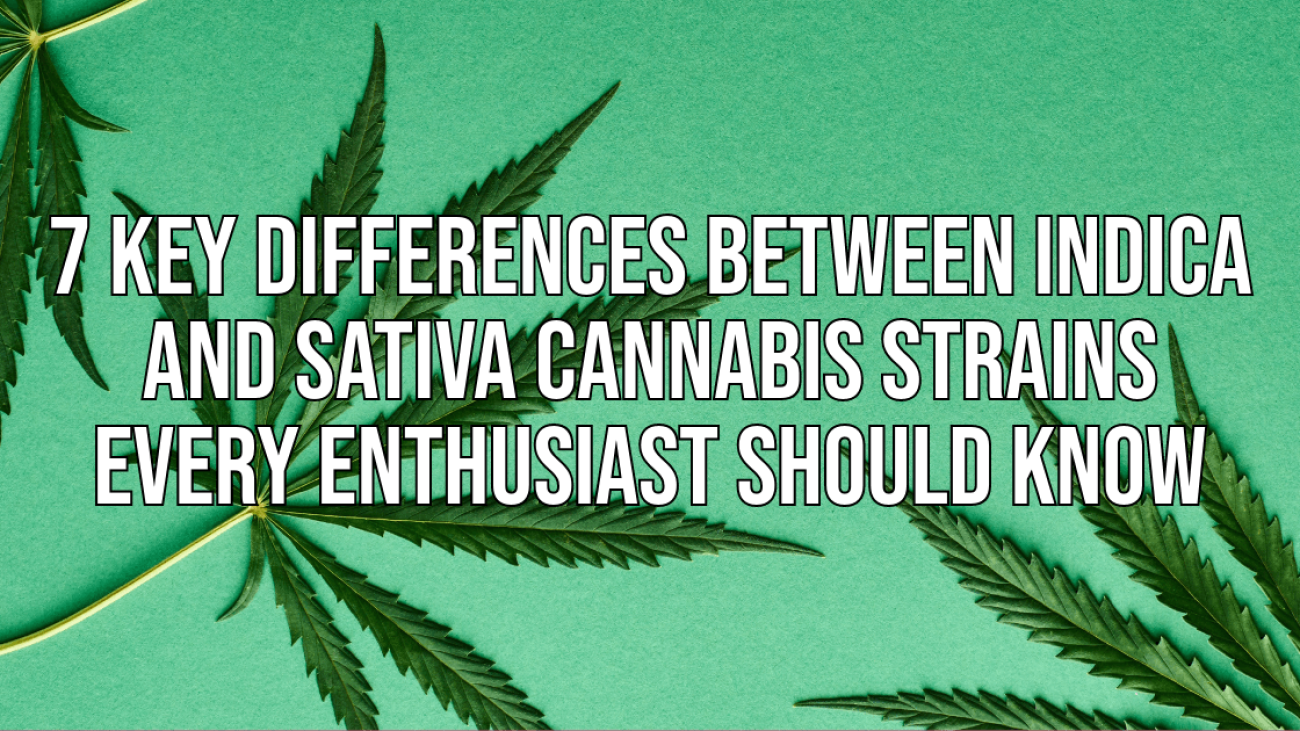Introduction
When it comes to cannabis, there are two primary types that enthusiasts often discuss: Indica and Sativa. While both belong to the same plant species, Cannabis sativa, they offer unique experiences and effects. Understanding the differences between Indica and Sativa strains can help consumers make informed choices based on their preferences and desired outcomes. In this article, we’ll delve into the distinctive characteristics of each type, exploring their effects, appearance, cultivation, and more. So let’s dive into 7 Key Differences Between Indica and Sativa Cannabis Strains Every Enthusiast Should Know.
What’s the Difference Between Indica and Sativa?
Effects on the Body and Mind
Indica strains are renowned for their relaxing, sedative effects. They typically provide a calming sensation that soothes both the body and mind, making them ideal for nighttime use or relaxation. On the other hand, Sativa strains are known for their energizing and uplifting effects. They often induce a cerebral high, enhancing creativity and focus, making them a preferred choice for daytime consumption.
Indica Effect:
Indica strains are commonly associated with feelings of relaxation and sedation, making them suitable for unwinding after a long day or promoting sleep.
Sativa Effect:
Sativa strains are prized for their energizing effects, which can enhance mood, creativity, and productivity throughout the day.
Physical Characteristics
Indica and Sativa plants exhibit distinct physical characteristics that make them easily recognizable to experienced growers. Indica plants tend to be shorter and bushier, with broad, dark green leaves. Sativa plants, on the other hand, are taller and more slender, with thinner leaves that are light green in color.
Indica Appearance:
Indica plants are characterized by their compact stature, which makes them suitable for indoor cultivation. They often have dense foliage and produce shorter, wider buds compared to Sativa strains.
Sativa Appearance:
Sativa plants are taller and more elongated, with sparse foliage that allows for better airflow. They are better suited for outdoor cultivation due to their height and tend to produce longer, thinner buds.
Growth Patterns and Cultivation
Indica and Sativa strains have different growth patterns and cultivation requirements, which can influence their suitability for indoor or outdoor growing environments. Indica plants have a shorter flowering time and tend to be more resilient to colder climates, making them a popular choice for outdoor cultivation in regions with shorter growing seasons. Sativa plants, on the other hand, have a longer flowering period and thrive in warm, tropical climates with ample sunlight.
Indica Cultivation
Indica strains are well-suited for indoor cultivation due to their compact size and shorter flowering period. They are also resilient to colder temperatures, making them suitable for outdoor cultivation in cooler climates.
Sativa Cultivation
Sativa strains require more space and taller ceilings for indoor cultivation due to their towering stature. They thrive in warm, sunny climates with a longer growing season, making them ideal for outdoor cultivation in tropical regions.
Cannabinoid and Terpene Profiles
Indica and Sativa strains contain different combinations of cannabinoids and terpenes, which contribute to their unique effects and flavors. Indica strains typically have higher levels of THC (tetrahydrocannabinol), the psychoactive compound responsible for the “high” associated with cannabis consumption. They also tend to contain higher levels of sedative terpenes, such as myrcene and linalool, which contribute to their relaxing effects. Sativa strains, on the other hand, often have lower THC levels and higher concentrations of uplifting terpenes, such as limonene and pinene, which contribute to their energizing effects and citrusy aromas.
Indica Composition:
Indica strains typically contain higher levels of Delta 9 THC and sedative terpenes, resulting in a calming, relaxing effect on the body and mind.
Sativa Composition:
Sativa strains tend to have lower Delta 9 THC levels and higher concentrations of uplifting terpenes, producing a cerebral, energizing high that enhances mood and creativity.
Medicinal Uses and Benefits
Both Indica and Sativa strains have been used for medicinal purposes for centuries, offering a range of potential health benefits for various conditions. Indica strains are often preferred for their ability to relieve pain and muscle tension, making them suitable for conditions such as chronic pain, arthritis, and insomnia. Sativa strains, on the other hand, are prized for their mood-boosting and antidepressant effects, which can help alleviate symptoms of depression, anxiety, and stress.
Indica Medicinal Uses:
Indica strains are commonly used to alleviate pain, muscle spasms, and insomnia due to their relaxing and sedative effects.
Sativa Medicinal Uses:
Sativa strains are valued for their mood-enhancing and energizing effects, which can help alleviate symptoms of depression, anxiety, and fatigue.
Popular Strains and Varieties
The world of cannabis is vast and diverse, with countless Indica and Sativa strains to choose from, each offering its own unique characteristics and effects. Some popular Indica strains include Granddaddy Purple, Northern Lights, and OG Kush, known for their potent relaxation and sedative effects. Popular Sativa strains include Sour Diesel, Jack Herer, and Durban Poison, prized for their uplifting and creative effects.
Indica Strains:
Granddaddy Purple, Northern Lights, OG Kush
Sativa Strains:
Sour Diesel, Jack Herer, Durban Poison
Legal Considerations and Regulations
In many parts of the world, cannabis laws and regulations vary, with some regions allowing for recreational or medicinal use, while others maintain strict prohibitions. It’s essential for consumers to familiarize themselves with local laws and regulations regarding the cultivation, possession, and consumption of cannabis products, whether they’re Indica or Sativa strains.
Before purchasing or consuming cannabis products, it’s important to research and understand the laws and regulations in your area to ensure compliance and avoid legal consequences.
Frequently Asked Questions (FAQs)
1. Can you mix Indica and Sativa strains?
Yes, blending Indica and Sativa strains, commonly referred to as hybridization, can result in unique combinations of effects, flavors, and aromas.
2. Are there any Indica-dominant Sativa strains or vice versa?
Yes, some strains may exhibit characteristics of both Indica and Sativa plants, depending on their genetic makeup and cultivation practices.
3. How do I determine if a strain is Indica or Sativa?
You can typically identify a strain’s classification based on its physical appearance, effects, and genetic lineage provided by the cultivator or dispensary.
4. What are the best methods for consuming Indica and Sativa strains?
Consumption methods vary depending on personal preferences and desired effects, but common options include smoking, vaporizing, edibles, and tinctures.
5. Are there any potential side effects associated with Indica or Sativa strains?
While cannabis is generally well-tolerated by most individuals, some may experience adverse effects such as dry mouth, red eyes, increased heart rate, or paranoia, particularly with higher THC concentrations.
6. How do environmental factors influence the characteristics of Indica and Sativa strains?
Environmental factors such as temperature, humidity, sunlight exposure, and soil composition can affect the growth, potency, and overall quality of Indica and Sativa plants.
Conclusion
Understanding the disparities between Indica and Sativa strains is crucial for cannabis enthusiasts seeking tailored experiences to suit their preferences and needs. Whether you’re drawn to the relaxing effects of Indica or the invigorating properties of Sativa, exploring the diverse world of cannabis strains can lead to new discoveries and enhanced enjoyment. By considering factors such as effects, appearance, cultivation, and medicinal uses, consumers can make informed decisions when selecting the perfect strain for any occasion.
Disclaimer
Products on this site contain a value of less than 0.3% Delta 9 THC, in accordance with federal law. Per the 2018 Farm Bill, hemp’s derivatives, isomers, and cannabinoids are federally legal as long as the finished product has less than 0.3% Delta 9 THC.
These statements have not been evaluated by the Food and Drug Administration. These products are intended for adults 21 and over. These products are not intended to diagnose, treat or cure any disease. This product should be used only as directed on the label. The effects of consuming hemp derived cannabinoids are still being researched by the scientific community. By consuming these products, you acknowledge and accept that you do so of your own volition and assume all related risks. Do not take if pregnant or nursing. This website is not offering medical advice. Consult with a physician before use if you have a serious medical condition or use prescription medications. A Doctor’s advice should be sought before using CBD products. By using this site, you agree to follow the Privacy Policy and Terms & Conditions printed on this site.
Adults only. Under 21 years of age prohibited.





